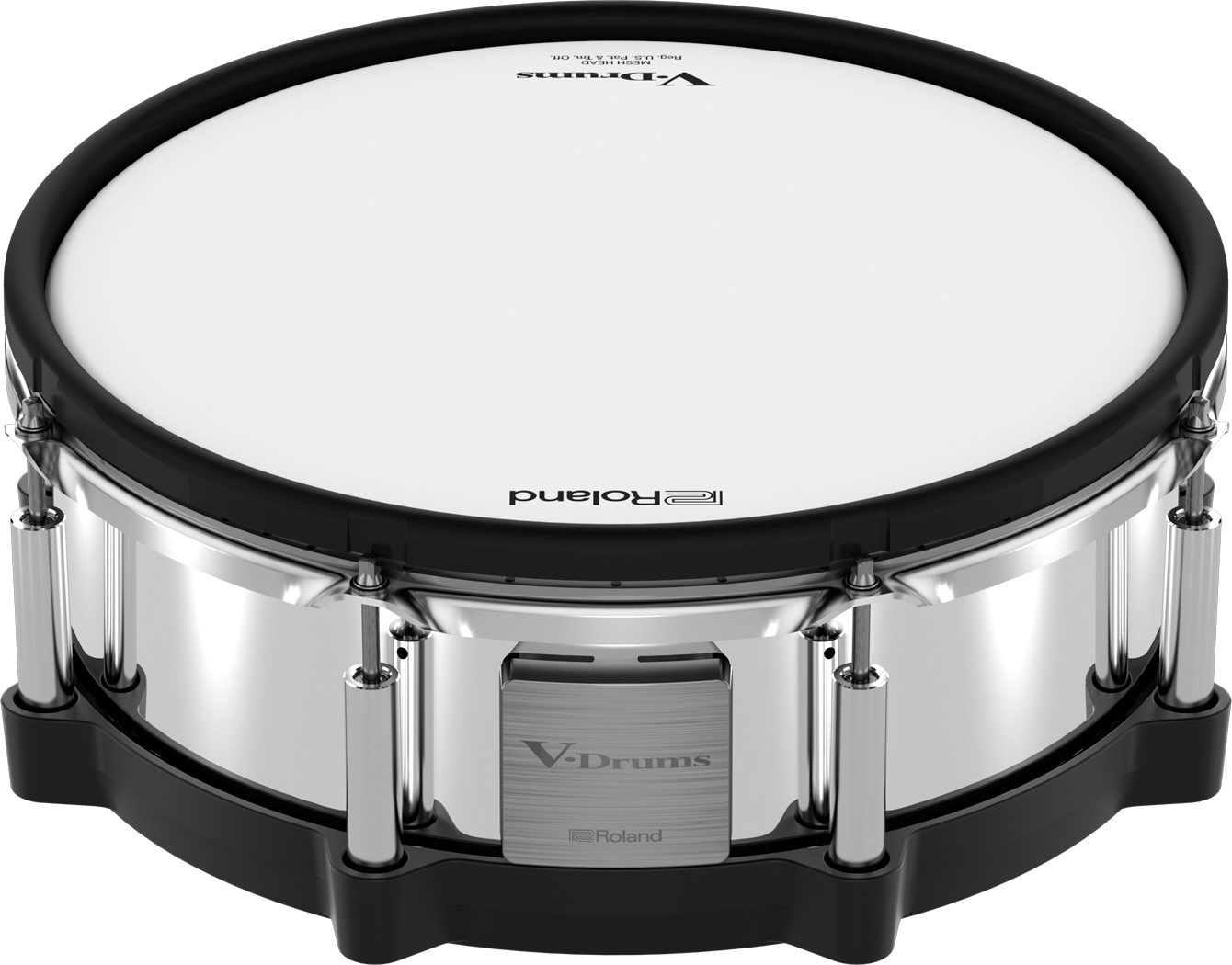The TD-27KV features Roland’s top line digital triggers for the most exciting and rewarding playing experience but what makes the digital triggers so good?
Let’s explore what digital triggering is all about here.
Most people assume electronic drums use digital triggers as standard but it’s not actually the case. In fact, most electronic kits available use mechanical triggers that attach via standard jack cable to the module that does all the heavy lifting.
Not so with the Roland digital triggers that feature their own in-built processor and connect via USB for the most natural and responsive playing experience possible.
Discover why these pads represent the biggest leap for triggering technology in 30 years.
Contributed by Simon Ayton for Roland Australia
How are digital triggers different from conventional triggers?
“If we’re talking cold, hard tech, the PD-140DS and CY-18DR are streets ahead, featuring five times as many piezo-electric sensor
At first glance, the PD-140DS snare and CY-18DR ride share the vibe of existing V-Pads and V-Cymbals.
However, the new PD-140DS snare features three-ply mesh head – most other V-Drums mesh heads are two ply.
Only three-ply heads allow natural-rebound feel and natural resistance under the stick.
Simply put, with three-ply mesh heads and digital triggering, the more effort you put into playing, the more you get back!
Another benefit of the three-ply heads is the ability to tailor the trigger response even more accurately.
As a big bonus, thanks to the dampening affect of the three heads, sympathetic vibrations are reduced allowing a lower trigger threshold and higher sensitivity without nasty false triggering.

The PD-140DS snare drum’s familiar 14” dimension means it fits easily into your kit on a standard acoustic snare stand.
Unlike most trigger pads that make normal playing techniques a compromise, the standard drum size and rim shape and height mean you don’t have to think about how to play your favourite rim shots and cross-sticks. Simply lay your stick hand with the butt of the stick on the head strike the rim with the shank of the stick as normal. Rim shots are rewarding too and react as you would expect from its acoustic cousin.
Now is where the digital triggering comes into play. For the first time ever with an electronic snare, the drum actually senses your skin contact and relays this instantly to the module which immediately switches the rim sound to a cross-stick naturally without any of the usual button pressing.
The CY-18DR ride, meanwhile, comes in at 18” with a more pronounced bell, giving plenty of acoustic-style swing on the stand. The big departure though, is what’s happening below the surface.

What's special about the on-board technology?
An electronic pad or cymbal is only as good as its sensors and triggers, as these are the elements that capture your playing; how hard you hit, where you hit and the time between each hit, before relaying the data to the sound module.
If we’re talking cold, hard tech, the latest PD-140DS and CY-18DR are streets ahead. These triggers feature five times as many piezo-electric sensors than other pads.
This new design affords much more accurate sensing and removal of the ‘hot spots’ that can make lesser electronic drum kits inconsistent and frustrating.
These pads are multi-sensing too – they not only have piezo electric sensors but also have electro-static sensor. This is similar technology as used on the touch-screen of your smart phone.
All this innovation results in snare and ride that behave exactly like their acoustic counterparts; natural muting by touching the bow of the ride and seamless, automatic cross-stick detection on the snare.
Can these new digital pads work with other brand modules?
“The pads’ astonishingly accurate positional and velocity sensing becomes obvious as soon as you throw some dynamic techniques at them…”
Unfortunately not – the digital trigger inputs and the proprietary technology that provides the expression and playability is unique to the TD-27 and TD-50 modules.
Given that they’re sensing the minutiae of your stick-work, these new pads are obviously sending some pretty complex data down the line to the sound module via USB connection.
The TD-27 features the new Prismatic Sound Engine which is able to translate the drummer’s playing with astonishing detail to produce corresponding sounds instantly. The sound engine is able to develop unique sounds directly in response to hitting position and strength, the interval between notes and even if the drummer’s hand is touching the surface.
Another big bonus is how easy they are to use. Simply connect and play. The module detects what kind of pad is being used and chooses the best settings automatically which the drummer can tweak to their heart’s desire too if they wish.
How does all that tech benefit me as a drummer?
The short answer to that is: grab your sticks!
The new Roland TD-27 digital pads’ astonishingly accurate positional and velocity sensing becomes obvious as soon as you throw some dynamic techniques at them.
On the PD-140DS snare, try a few rolls, rim shots, brush scrapes and cross-stick techniques (just place your hand on the head to play in this style).
See how conventional drumming techniques can be used on the PD-140DS
On the CY-18DR ride, throw in a bow shot, edge shot and bell shot, or even choke the cymbal with a single touch.
These pads genuinely let you use the same techniques as you would on acoustic drums. What you play is what you hear.
See how conventional drumming techniques can be used on the CY-18DR here!

